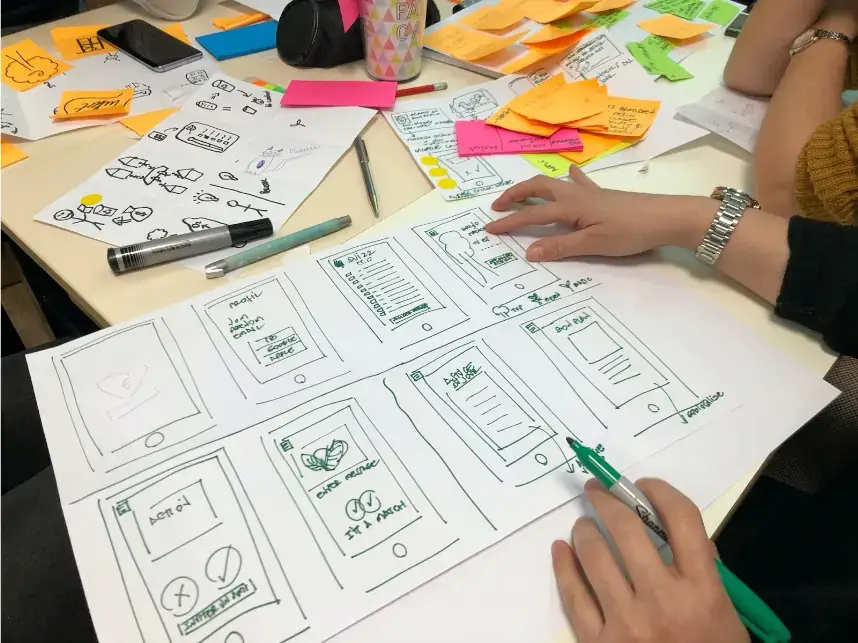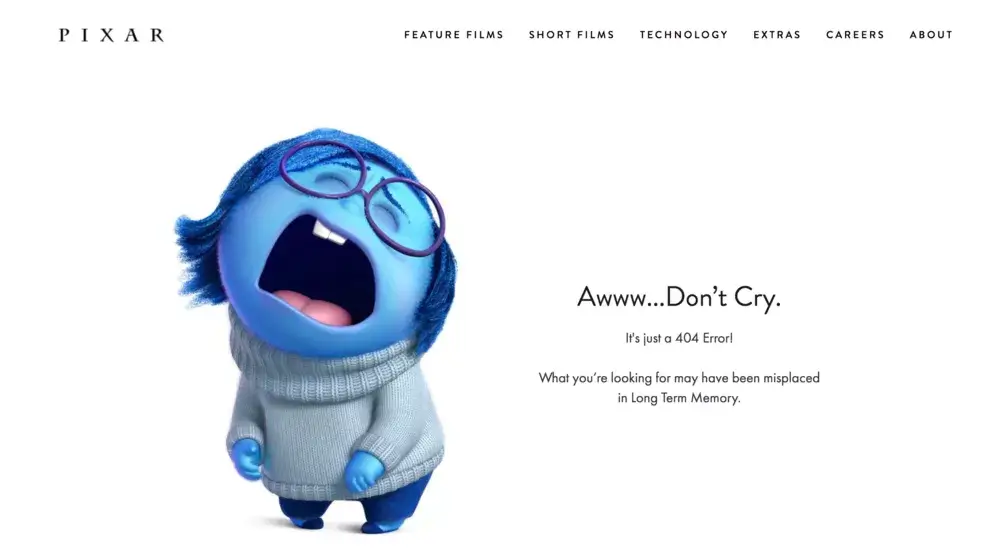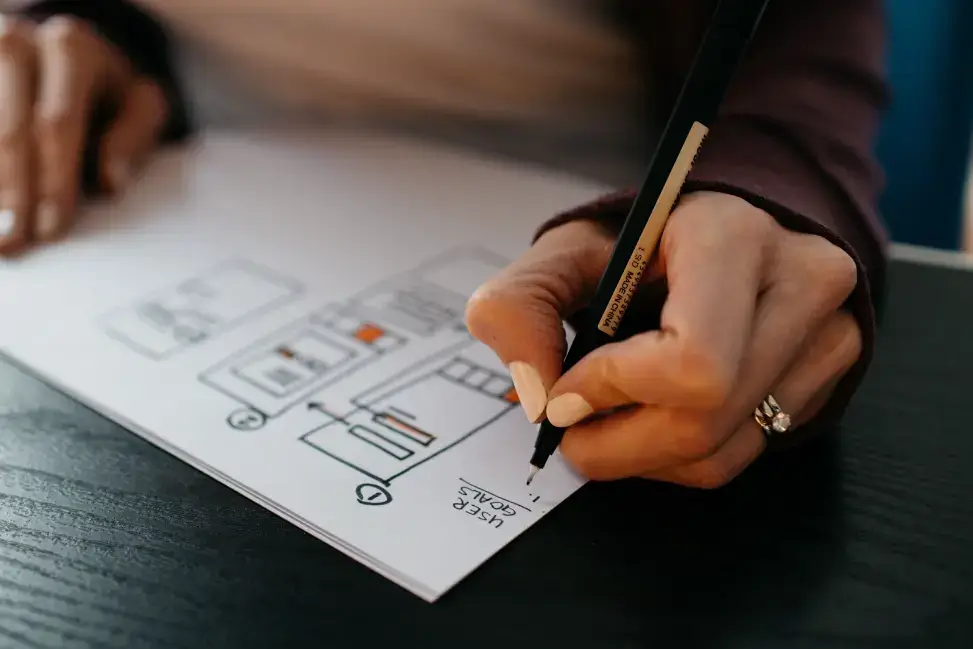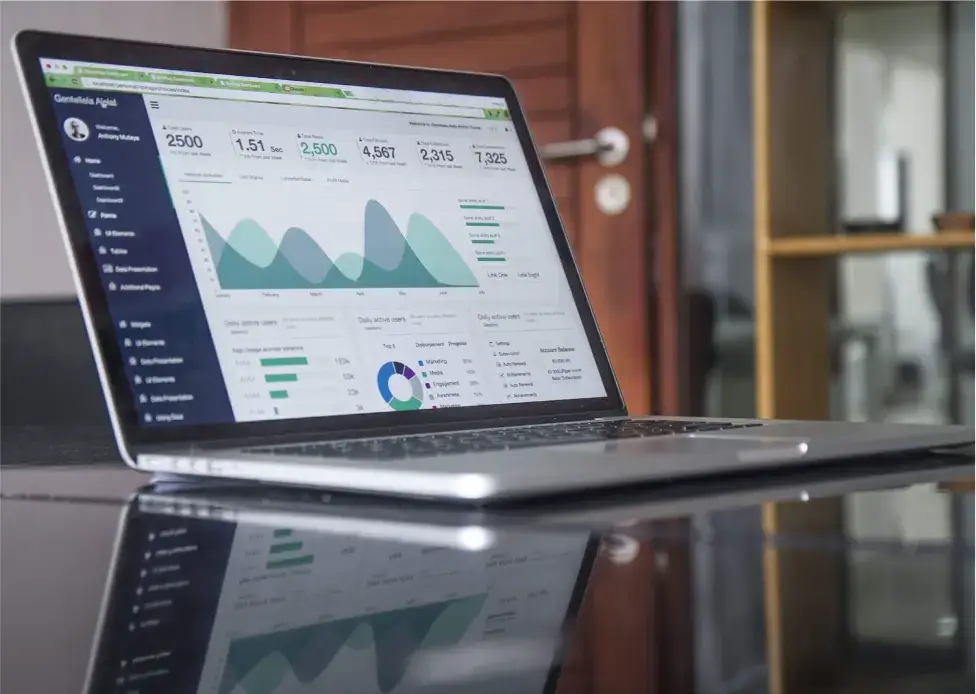Having a website that captivates your audience's attention is crucial to your success.
A creative website design will retain visitors, reduce bounce rate, and navigate them towards the actions you want them to take, such as signing up for a newsletter, requesting a demo, purchasing a product or a service, etc.
Skip to:
- Importance of Website Design for Engaging Users
- What is a Dynamic Web Page?
- Exploring Dynamic Elements
- The Importance of Customizing Your Website Design
- Going Beyond Design: Functionality Customization
- Utilizing Analytics for Better Insights
- Optimizing Website Speed & Performance

Photo by Amélie Mourichon on Unsplash
Dynamic elements can help you transform a dull website into a visually engaging visitor experience.
Importance of Website Design for Engaging Users
Well-designed websites with user-friendly interfaces that are easy to navigate keep visitors engaged for extended periods and provide an enjoyable, intuitive, and visually compelling experience.
Aesthetically pleasing elements such as color schemes, font choices, customized social media feeds, and uncluttered layouts contribute to the overall design, making the website visually appealing and inviting.
What Is a Dynamic Web Page?
A dynamic web page can change its content or appearance in response to various factors, such as user input, database updates, or real-time events.
In contrast, static web pages have fixed content and visuals that look the same to every visitor, and they do not change unless manually updated by a web developer.
Dynamic web pages offer the advantage of displaying updated content in real-time, allowing for personalized user experiences, dynamic data retrieval, and incorporating interactive features like forms, maps, or multimedia elements.
If you want to leverage these benefits, consider exploring options to create and launch a website that suits your needs and preferences.
Exploring Dynamic Elements
In this section:
- Dynamic background videos
- Creating 404 error pages
- Interactive games or quizzes
- Innovative navigation menus
- Localization

Photo by Hal Gatewood on Unsplash
When designing a dynamic website, here are five elements that you can incorporate to make your website more engaging:
-
Dynamic background videos
Websites that use videos as backgrounds can instantly capture visitors' attention and create a more immersive atmosphere.
Dynamic background video sliders engage users by creating a sense of movement and interactivity.
They also enhance the visual appeal of a website and can be used to showcase products or services and tell a visual story that will leave a lasting impression on visitors.
-
Creative 404 error pages
Creative Error 404 pages can feature quirky illustrations, witty messages, or games to entertain users while navigating them toward different parts of the website.

Source: Pixar
Creative 404 pages can be fun, like this example from Pixar, alleviate user frustration, and can reflect a brand's commitment to an enjoyable user experience.
-
Interactive games or quizzes
Dynamic websites can incorporate interactive content, such as games or quizzes, designed to align with a brand's values or provide valuable educational content.
Additionally, incorporating online Educational Games for Children can enhance user engagement and provide a fun and educational experience for younger audiences.
For example, selling fitness gear and supplements, like a fitness trampoline, can include interactive workout challenges and health-related quizzes.
Additionally, for customers looking to complement their fitness journey, incorporating features like 'Find a gym near you' can provide added convenience and support in achieving their health and wellness goals.
By incorporating elements such as gamification, challenges, or rewards, websites can keep visitors hooked and encourage them to spend more time on the site.
-
Innovative navigation menus
Innovative navigation menus allow visitors to easily find their way around the content by employing creative and unconventional designs that animate the website and give it a personality.
Instead of the typical menu bars, design these menus as interactive icons, hidden side menus, or floating navigation elements that are visually appealing.
If you are a business, having intuitive and easy-to-use navigation and well-organized information architecture also makes it easier for employees to find what they need quickly when dealing with clients, increasing employee satisfaction.
-
Localization
Websites that adapt their content to different regions provide a more personalized user experience by presenting information in their preferred language and cultural context.
Localization, which you can do with help from different AI tools for translation and interpreting, is particularly valuable for international businesses or organizations targeting specific regions or language preferences.
By employing localization strategies, websites can better connect with their target audience, build trust, and demonstrate their commitment to providing a user-centric experience.
The Importance of Customizing Your Website Design

Photo by Visual Design on Unsplash
Countless websites are competing for your target audience’s attention. Customizing your website design can leave a lasting impression on visitors.
-
Engage and delight your visitors
When visitors land on your website, you have only a few seconds to capture their attention and make a positive impression.
By tailoring the design elements to align with your brand personality and target audience, you can engage and delight your visitors while creating a solid brand identity and encouraging longer browsing sessions and increased conversions.
-
Personalize your logo and branding elements
Your logo and branding elements represent your values, mission, and unique selling proposition. Design your logos to help tailor your website design to your target audience.
Consistency between your website design and other brand materials helps reinforce your brand image, making it easier for customers to recognize and remember your business.
Going Beyond Design: Customizing Website Functionality
In this section:
- Adding custom forms and contact pages
- Live chat, calls, and surveys
- Integrating e-commerce functionality
- Social media
- Newsletter signup popup

Photo by Kelly Sikkema on Unsplash
Your website needs to be functional to stand out and truly provide a seamless user experience. You can customize your website functionality by:
-
Adding custom forms and contact pages
Custom forms and contact pages are invaluable tools for collecting information from visitors and encouraging them to reach out.
Customizing these features allows you to create a user-friendly experience that facilitates communication and generates quality leads.
-
Adding live chat, calls, and surveys
Live chat is a great way to offer real-time assistance to your visitors. It can answer questions, solve problems, and provide a personalized experience to visitors.
Customizing the chat widget's appearance and adding proactive chat invitations can also prompt visitors to take action.
Incorporating a dedicated customer support hotline on your website allows real-time assistance, efficient issue resolution, and personalized support.
Customization, such as greeting and callback requests, enhances customer satisfaction and fosters trust, ensuring a seamless user experience.
Remember to obtain proper TCPA consent from visitors before using their contact information for the call center, demonstrating your commitment to compliance and respecting their privacy.
Surveys are another valuable tool to gather feedback and insights from your website visitors.
Whether you want to evaluate user satisfaction, gather opinions, or conduct market research, customizing your surveys can make them more visually appealing and engaging.
By using branching and skip logic, you can ensure that visitors are presented with relevant questions and have a smoother survey experience.
-
Integrating e-commerce functionality
Customizing your e-commerce platform allows you to create a seamless shopping experience tailored to your specific products and target audience.
You can customize the product pages, shopping cart, and checkout process to optimize the user experience. You can also add features like product recommendations, related items, and customer reviews to enhance engagement and drive conversions.
-
Integrating social media
Incorporating social media into your website is a powerful way to expand your online presence and engage with your audience. You can customize your social media icons to match your branding and make them more prominent to encourage sharing.
Additionally, displaying social media feeds on your website allows visitors to see your latest social media posts, encouraging them to follow and interact with you on various platforms.
-
Newsletter signup popup
Integrating customized email newsletters allows websites to foster stronger relationships with visitors, keeping them informed and engaged with regular updates, promotions, and valuable content.
Incorporating a user-friendly email format that adapts seamlessly across various devices ensures that the newsletters reach a wider audience and encourage more significant interaction.
By optimizing the email layout and utilizing responsive design techniques, websites can maximize engagement and enhance the overall user experience.
Utilizing Analytics for Better Insights

Photo by Carlos Muza on Unsplash
Analytics can help you gain valuable insights into how your website design is performing. You can analyze user behavior to learn which pages they visit and how much time they spend on them, track conversions, and get a visual representation of where users interact.
Review and test your website design with heatmap and click-tracking tools, and conduct A/B tests to see which versions of specific website elements perform better.
Regular tracking and analysis of critical metrics enable you to continuously refine your website's design, leading to improved engagement and conversions.
Optimizing Website Speed and Performance
Optimizing a website's speed and performance is crucial in keeping visitors’ attention. When a website loads quickly and smoothly, people are likelier to stay and explore its content.
A reliable web hosting provider can help you optimize your website's speed and performance, increasing visitor engagement and driving more traffic.
Conclusion
By incorporating dynamic elements and customizing your website, you can create a memorable user experience for your visitors.
While design plays a significant role in capturing your target audience’s attention, your website’s functionality, speed, and performance are equally important in helping you reach your goals.
Ensure you are constantly tracking user behavior through analytics to make data-driven decisions on design elements such as color schemes, layouts, calls-to-action, and more, leading to continuous improvement of your website's performance.
Author Bio
Radostin Anastasov is the Content and Digital PR Manager of ThriveMyWay. He has acquired marketing and PR experience across various industries, such as AI, finance, and communications. When he’s not busy writing, he plays basketball to rock music.



